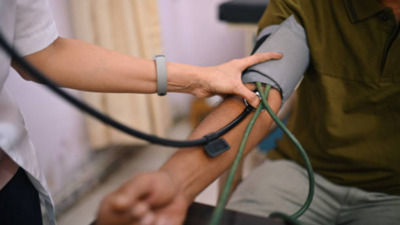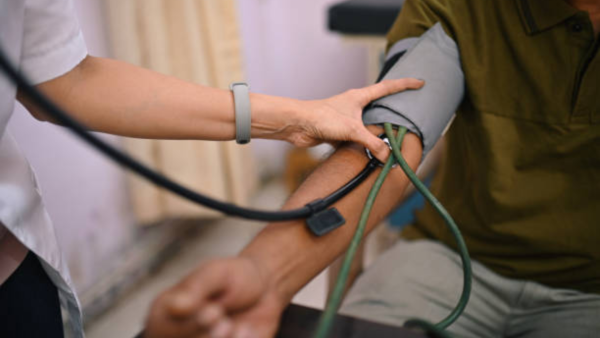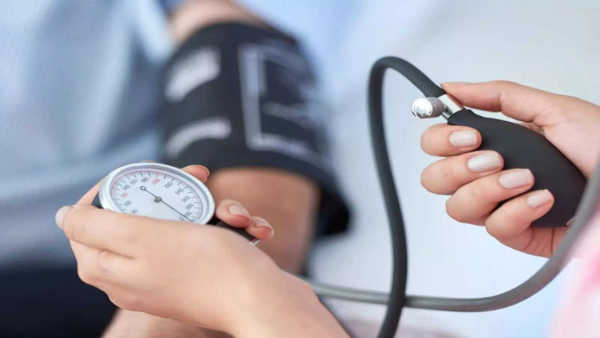
Blood pressure, this simple-sounding term carries heavy weight when it comes to health. It's something doctors check routinely, and yet, the fear around it often comes from half-known truths. While high blood pressure (Hypertension) gets more attention and is often talked about in hushed tones, low blood pressure (Hypotension), too, can raise serious health concerns. But when comparing the two, which one truly puts the body at greater risk?
Here are some facts on what makes one more dangerous than the other, and most importantly, how balance becomes the silent hero in this story.
High BP is the bigger villain
High blood pressure is often seen as the “silent killer”, and rightly so. It can quietly damage the arteries, heart, brain, kidneys, and eyes over time, without showing any symptoms until something serious happens, like a heart attack or stroke.
While high BP does increase long-term risk, especially when uncontrolled, it's the gradual damage that makes it dangerous. However, this doesn’t mean low BP gets a free pass. Low blood pressure, particularly when it drops suddenly, can lead to fainting, shock, and even organ failure if not managed properly. In such cases, low BP can become dangerous faster than high BP.

So, in reality, both high and low BP are dangerous, but in different ways. High BP slowly chips away at health, while low BP can lead to an emergency, especially in vulnerable people like the elderly or pregnant women.
When low BP turns life-threatening
Many believe low BP is always safer; after all, doesn’t it mean less strain on the heart?
Chronically low BP can be just as problematic. If the blood pressure is too low, vital organs like the brain don’t get enough oxygen-rich blood. This can lead to dizziness, confusion, fatigue, or worse, collapse. In some rare but critical cases, such as internal bleeding or sepsis, dangerously low BP can trigger shock, which is a medical emergency.
What’s worrying is how easily low BP gets ignored. Unlike high BP, there’s no standard medication for it. Often, the cause needs to be traced — dehydration, certain medications, or hormonal issues — and corrected from the root.
Why balance matters more than numbers
Normal BP is usually defined as 120/80 mmHg. Anything above or below is seen as a problem.

Numbers alone don’t tell the full story. A person with 130/85 BP may be perfectly healthy, while someone with 115/75 may feel lightheaded all the time. The ideal range varies slightly from person to person. What truly matters is how the body feels and functions.
Health is not about reaching a textbook number — it’s about how blood flows, how organs perform, and how alert and steady the body feels. Balance is key, not perfection.
The subtle signals the body sends
Blood pressure problems are silent — they show no signs until it’s too late.
The body actually gives quite hints. Persistent headaches, shortness of breath, fatigue, blurry vision, or feeling faint while standing are some signs the BP may be off-track. But these are often brushed off as “just tiredness” or “weather changes.”
Recognising these whispers before they become screams can make a big difference. Regular check-ups, even at home with a digital BP machine, can help keep an eye on the numbers, but listening to how the body feels every day is equally important.
Best ways to keep BP in harmony
Blood pressure is sensitive, but also forgiving when treated with care. Here are some science-backed ways that actually help, beyond the usual advice:
- Eating meals with potassium-rich ingredients like banana, coconut water, and sweet potatoes can help the body flush out excess sodium naturally.
- Breathing slowly and deeply for just five minutes a day, something as simple as sitting quietly and focusing on the breath, has been shown to lower BP levels.
- Walking barefoot on grass early in the morning (a lesser-known tip from Japanese wellness) may stimulate pressure points that regulate heart health.
- Staying hydrated is especially crucial for those who tend to have low BP. Just one glass of water at the right time can prevent a fainting episode.
- Avoiding sudden changes in position (like standing up too fast) can help both low and high BP individuals avoid dizziness or sudden pressure spikes.


